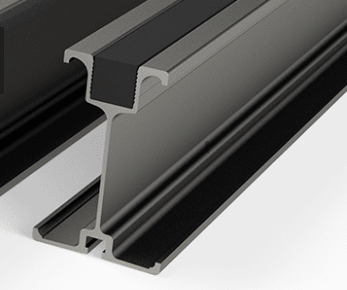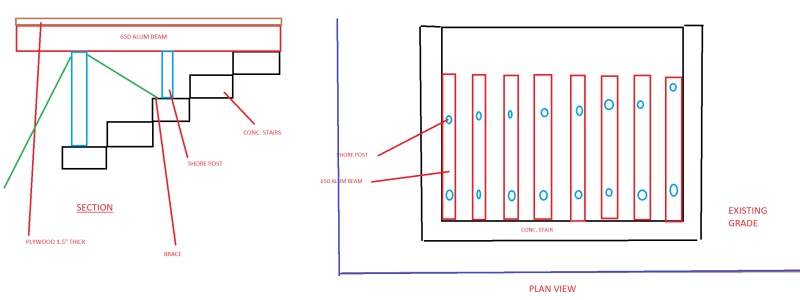Are you allowed to flip an aluminum beam so that the bottom flange is at the top? I am currently designing a shoring platform that uses 650 aluminum beams. The top flange has a width of 3.5 inches and the bottom has a width of 4.8 inches. The beams have 1.5 inches of plywood on top (2 ply, 0.75 inches thick). The problem right now is that there is too much of a gap between the beams (the clear span) to where the plywood is unsupported for that clean span (currently about 9" clear span). This is a problem because the contractor wants to drive a heavy truck on top and the punching shear would likely be too high from the tire load and cause the plywood to fail. So I am proposing to flip the aluminum beam so that the bottom flange (width 4.8 inches) is on top and thus the clean span between each beam is small enough to allow the plywood to be unsupported only for a small length.
So my question is, are you allowed to flip the aluminum beam? My boss said he has never seen that done before. If so or if not, does anyone know of a reference where it might say it is okay or not okay?
So my question is, are you allowed to flip the aluminum beam? My boss said he has never seen that done before. If so or if not, does anyone know of a reference where it might say it is okay or not okay?


